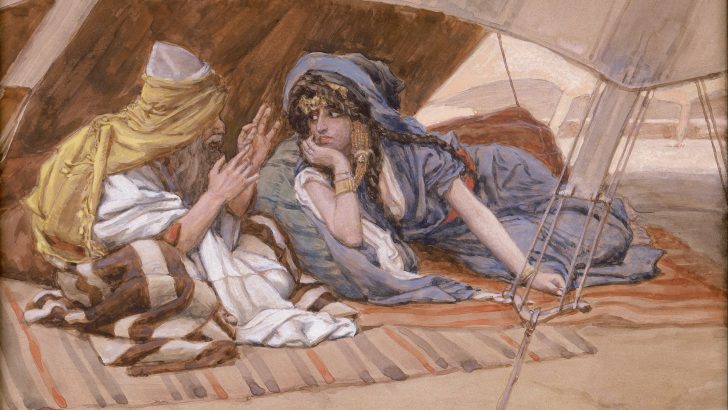One size doesn’t fit everyone. This isn’t just true for clothing, it’s also true for spirituality. Our challenges in life change as we age. Spirituality hasn’t always been fully sensitive to this. True, we’ve always had tailored instruction and activities for children, young people and for people who are raising children, carrying a job, and paying a mortgage, but we’ve never developed a spirituality for what happens when those years are over.
Why is one needed? Jesus seemingly didn’t have one. He didn’t have one set of teachings for the young, another for those in mid-life and still another for the elderly. He just taught. The Sermon on the Mount, the parables, and his invitation to take up his Cross are intended in the same way for everyone, irrespective of age. But we hear those teaching at very different times in our lives; and it’s one thing to hear the Sermon the Mount when you’re seven years old, another when you’re 27, and quite another when you’re 87. Jesus’ teachings don’t change, but we do, and they offer very specific challenges at different times of our lives.
Exception
Christian spirituality has generally kept this in mind, with one exception. Except for Jesus and an occasional mystic, it has failed to develop an explicit spirituality for our later years, for how we are meant to be generative in our senior years and how we are to die in a life-giving way. But there’s a good reason for this lacuna. Simply put, it wasn’t needed because up until this last century most people never lived into old age.
The Desert fathers and mothers folded the question of how to age and die into the framework of their spirituality”
For example, in Palestine, in Jesus’ time, the average life expectancy was between 30 and 35 years. A century ago in the United States, it was still less than 50 years. When most people in the world died before they reached the age of 50, there was no real need for a spirituality of aging.
There is such a spirituality inside the Gospels. Even though he died at 33 Jesus left us a paradigm of how to age and die. But that paradigm, while healthily infusing and undergirding Christian spirituality in general, was never developed more specifically into a spirituality of aging (with the exception of some of the great Christian mystics).
After Jesus, the Desert fathers and mothers folded the question of how to age and die into the overall framework of their spirituality. For them, spirituality was a quest to ‘see the face of God’ and that, as Jesus makes clear, requires one thing, purity of heart. So for them, no matter your age, the challenge was the same, trying to achieve purity of heart.
We’re developing, more and explicit spiritualities of aging and dying”
Then in the age of the per-secutions and the early Christian martyrs, the idea developed that the ideal way to age and die was through martyrdom. Later, when Christians were no longer physically martyred, the idea took hold that you could take on a voluntary type of martyrdom by living the evangelical counsels of poverty, chastity, and obedience. They believed that living these, like the quest for purity of heart, taught you all you needed to know, no matter your age.
Eventually this was expanded to mean that anyone who faithfully responded to the duties in his or her life, irrespective of age, would learn everything necessary to come to sanctity through that fidelity. As a famous aphorism put it: stay inside your cell and it will teach you all you need to know. Understood properly, there’s a spirituality of aging and dying inside these notions, but until recently there was little need to draw that out more explicitly.
Happily, today the situation is changing and we’re developing, more and more, some explicit spiritualities of aging and dying. Perhaps this reflects an aging population, but there’s now a burgeoning body of literature, both religious and secular, that’s taking up the question of aging and dying.
These authors include many names already familiar to us: Henri Nouwen, Richard Rohr, Kathleen Dowling Singh, David Brooks, Cardinal Bernardin, Michael Paul Gallagher, Joan Chittister, Parker Palmer, Marilyn Chandler McEntyre, Paul Kalanithi, Erica Jong, Kathie Roiphe and Wilkie and Noreeen Au, among others. Coming from a variety of perspectives, each of these offer insights into what God and nature intend for us in our later years.
In essence, here’s the issue: today, we’re living longer and healthier late into life. It’s common today to retire sometime in our early 60s after having raised our children, superannuated from our jobs and paid our mortgages. So what’s next, given that we probably have 20 or 30 more years of health and energy left? What are these years for? What are we called to now, beyond loving our grandkids?
Abraham and Sarah, in their old age, were invited to set out for a new land and conceive a child long after this was biologically impossible for them. That’s our call too.
Which ‘Isaac’ are we called to give birth to in our later years? We need guidance.


 Fr Ronald Rolheiser
Fr Ronald Rolheiser Abram's Counsel to Sarai - James Tissot, ca. 1900
Abram's Counsel to Sarai - James Tissot, ca. 1900